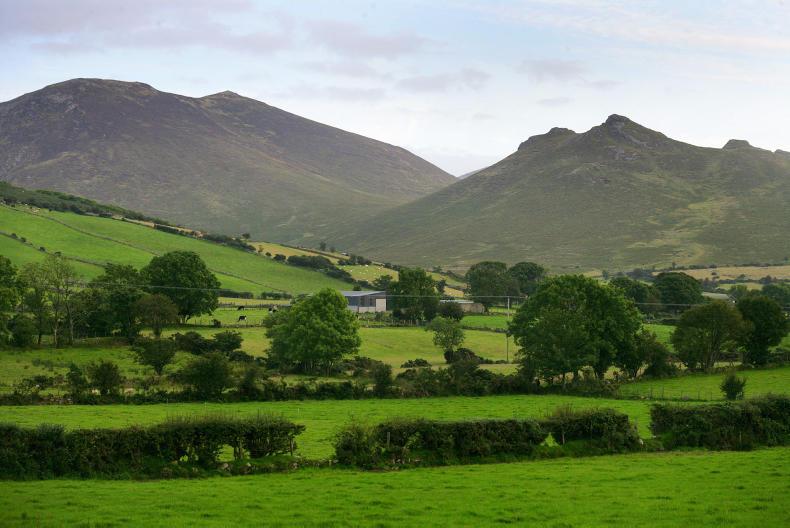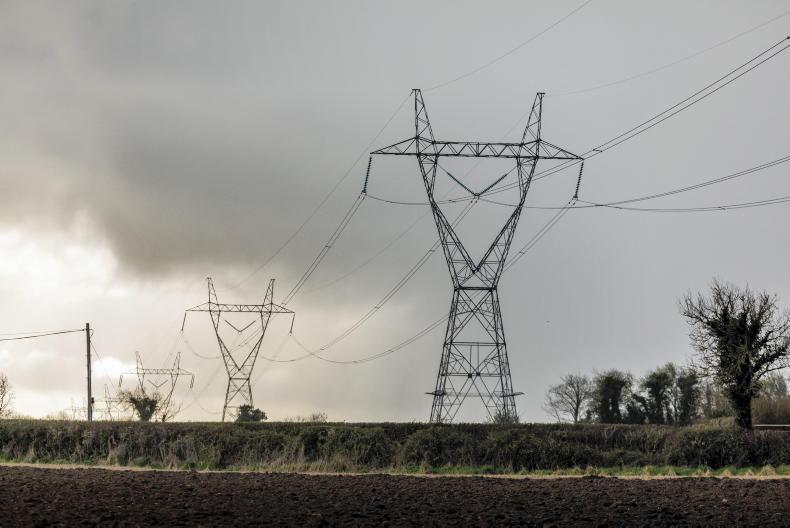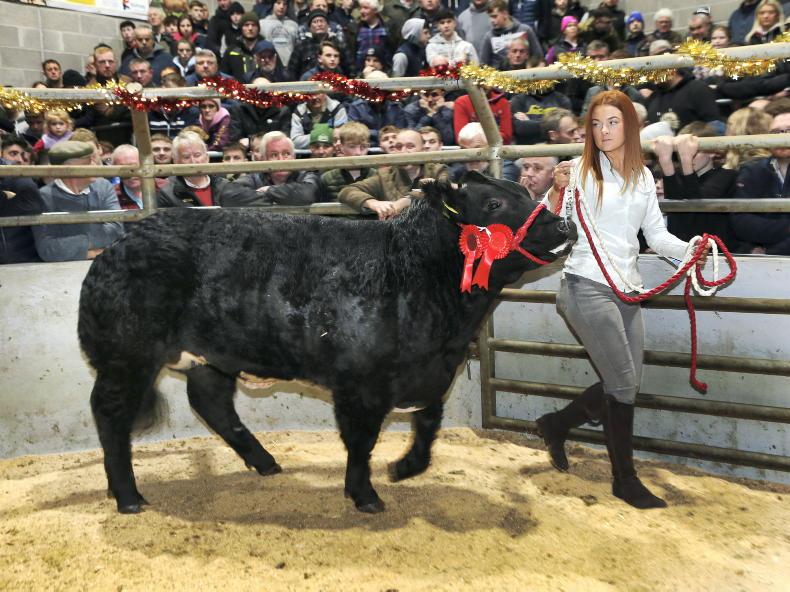The average price paid for agricultural land in Northern Ireland (NI) during 2019 was £9,956/ac. It represents a slight decrease of 2% or £226/ac on the 2018 average price of £10,182/ac.
Our data for 2019 is based on a survey which covered 144 land sales spanning 5,060 acres in NI. It marks 10 years of the Irish Farmers Journal tracking land prices in NI as part of the Agricultural Land Price Report.
The average NI land price in 2019 is the second highest on record and is surpassed only by 2018, which was also the only year when the NI average breached the £10,000/ac mark.
Land prices in NI eased back in the first three years of our survey from £9,585/ac in 2010 to £8,726/ac in 2013, but there has been a general trend upwards since then.
Three of the past six years have recorded decreases, but at smaller steps than the increases seen in the other three years.
The 2019 average is £515/ac higher than the 10-year average of £9,441/ac.
There has been a variation in how average prices in each NI county have moved since 2010.
Antrim has had the most consistent land prices, whereas Tyrone has recorded several sharp rises and falls over the past decade.
The biggest price increase during the 10-year period was seen in Armagh, where the average price rose sharply from 2015 to 2018. Despite recording an 8.1% drop last year, Armagh is still the third most expensive county for land in the island of Ireland at £12,705/ac (€14,475/ac).
Land prices across NI remain ahead of the market in the Republic of Ireland (ROI). When converted at last year’s average exchange rate of €1=£0.87777, we see that NI land is almost €2,400/ac more expensive than ROI on average.
Market drivers
The main driver of the NI land market is the tight supply. Our records show that 13,356 acres were publicly advertised for sale last year, which represents less than 0.7% of the total grassland and arable area in NI, and is 15% lower than 2018 levels.
When a piece of land comes on the market, demand is generally high because bidders know that they won’t get another chance to buy it again.
This long-term, often inter-generational, approach to buying land explains why short-term factors, such as a drop in farm incomes, tend not to have a major impact on the land market.
For example, official government figures confirm that a tough year across farming sectors in 2019 saw NI farm incomes drop by 25%, which follows on from a 23% drop the year before. That compares to the average NI land price which was only down 2% last year and rose by 4% the year before.
The effect of business people with farming interests and farmers with off-farm income in the NI land market also explains why land prices do not follow farm incomes. There are areas across NI where the influence of farming-minded business people has a significant effect on land prices, such as mid-Ulster and southern regions of NI.
Reserve price
An important factor that drives land prices, but is often under-appreciated, is the high reserve price that most sellers have on land. Sellers are often not willing to proceed unless the offer is close to the average price for the area. This means that when land does exchange hands, it usually makes a decent price, which keeps average prices up.
There tends to be less land offered up for sale in areas of lower-quality land, such as the Glens of Antrim, the Mournes or the Sperrins. Auctioneers in these areas suggest that strong family attachment to land keeps the supply low. This also holds up average prices in our survey as there tends to be more good-quality land exchanging hands than marginal land.
However, land quality does not always dictate price.
A parcel of mid-quality land that is surrounded by several expanding farmers will often make more than a piece of better-quality land which has fewer potential buyers near it.
Land that has road frontage and good access makes considerably more than land which is accessed via a shared lane.
Land quality does not always dictate price
Reports indicate that banks are cautious about lending money for the purchase of land on a shared lane due to concerns about potential disputes over access in the future.
Finally, smaller parcels make more per acre than larger lots as they have more potential buyers due to their lower overall cost. In 2019, the average price for lots under 25 acres in size was £11,144/ac, which is £1,482/ac more expensive than the over 25-acre average.
*Average price per acre: £9,956 (€11,342)
Number of farms offered: 480
Total acreage offered: 13,356
Average lot size (acres): 28
Biggest farm offered (acres): 340
*Based on 144 transactions
Hill land averages £2,700/ac
In a separate survey of hill ground and rougher grazing, 428 acres of land that sold across NI during 2019 made an average price of £2,704/ac. This represents an increase of £217/ac, or 8.7%, from the 2018 NI hill land survey.
The quality of land and subsequent selling prices in this survey varies widely. It ranged from £1,100/ac for 60 acres of heavy mountain ground in east Derry, to £3,450/ac for 70 acres of green hill in mid-Antrim.
Auctioneers report that there continued to be a steady demand for hill and rough grazing throughout 2019, particularly for areas of dry, green hill land.
NI land survey background
The NI figures used in the Agricultural Land Price Report are from a survey of auctioneers and estate agents. Details of all agricultural land in NI that was publicly advertised for sale in newspapers and online during 2019 were recorded and selling agents were later contacted for updates on sales.
Only land that could be described as arable, cuttable for silage or good-quality grazing was included in the main survey. The auctioneers’ valuation of other features such as houses or building sites were deducted from sale prices if it inflated the per acre land price.
We extend our sincere gratitude to the auctioneers and estate agents that participated in the survey.
Read more
NI land market drops 15% in 2019
NI land averages over £10,000/acre
The average price paid for agricultural land in Northern Ireland (NI) during 2019 was £9,956/ac. It represents a slight decrease of 2% or £226/ac on the 2018 average price of £10,182/ac.
Our data for 2019 is based on a survey which covered 144 land sales spanning 5,060 acres in NI. It marks 10 years of the Irish Farmers Journal tracking land prices in NI as part of the Agricultural Land Price Report.
The average NI land price in 2019 is the second highest on record and is surpassed only by 2018, which was also the only year when the NI average breached the £10,000/ac mark.
Land prices in NI eased back in the first three years of our survey from £9,585/ac in 2010 to £8,726/ac in 2013, but there has been a general trend upwards since then.
Three of the past six years have recorded decreases, but at smaller steps than the increases seen in the other three years.
The 2019 average is £515/ac higher than the 10-year average of £9,441/ac.
There has been a variation in how average prices in each NI county have moved since 2010.
Antrim has had the most consistent land prices, whereas Tyrone has recorded several sharp rises and falls over the past decade.
The biggest price increase during the 10-year period was seen in Armagh, where the average price rose sharply from 2015 to 2018. Despite recording an 8.1% drop last year, Armagh is still the third most expensive county for land in the island of Ireland at £12,705/ac (€14,475/ac).
Land prices across NI remain ahead of the market in the Republic of Ireland (ROI). When converted at last year’s average exchange rate of €1=£0.87777, we see that NI land is almost €2,400/ac more expensive than ROI on average.
Market drivers
The main driver of the NI land market is the tight supply. Our records show that 13,356 acres were publicly advertised for sale last year, which represents less than 0.7% of the total grassland and arable area in NI, and is 15% lower than 2018 levels.
When a piece of land comes on the market, demand is generally high because bidders know that they won’t get another chance to buy it again.
This long-term, often inter-generational, approach to buying land explains why short-term factors, such as a drop in farm incomes, tend not to have a major impact on the land market.
For example, official government figures confirm that a tough year across farming sectors in 2019 saw NI farm incomes drop by 25%, which follows on from a 23% drop the year before. That compares to the average NI land price which was only down 2% last year and rose by 4% the year before.
The effect of business people with farming interests and farmers with off-farm income in the NI land market also explains why land prices do not follow farm incomes. There are areas across NI where the influence of farming-minded business people has a significant effect on land prices, such as mid-Ulster and southern regions of NI.
Reserve price
An important factor that drives land prices, but is often under-appreciated, is the high reserve price that most sellers have on land. Sellers are often not willing to proceed unless the offer is close to the average price for the area. This means that when land does exchange hands, it usually makes a decent price, which keeps average prices up.
There tends to be less land offered up for sale in areas of lower-quality land, such as the Glens of Antrim, the Mournes or the Sperrins. Auctioneers in these areas suggest that strong family attachment to land keeps the supply low. This also holds up average prices in our survey as there tends to be more good-quality land exchanging hands than marginal land.
However, land quality does not always dictate price.
A parcel of mid-quality land that is surrounded by several expanding farmers will often make more than a piece of better-quality land which has fewer potential buyers near it.
Land that has road frontage and good access makes considerably more than land which is accessed via a shared lane.
Land quality does not always dictate price
Reports indicate that banks are cautious about lending money for the purchase of land on a shared lane due to concerns about potential disputes over access in the future.
Finally, smaller parcels make more per acre than larger lots as they have more potential buyers due to their lower overall cost. In 2019, the average price for lots under 25 acres in size was £11,144/ac, which is £1,482/ac more expensive than the over 25-acre average.
*Average price per acre: £9,956 (€11,342)
Number of farms offered: 480
Total acreage offered: 13,356
Average lot size (acres): 28
Biggest farm offered (acres): 340
*Based on 144 transactions
Hill land averages £2,700/ac
In a separate survey of hill ground and rougher grazing, 428 acres of land that sold across NI during 2019 made an average price of £2,704/ac. This represents an increase of £217/ac, or 8.7%, from the 2018 NI hill land survey.
The quality of land and subsequent selling prices in this survey varies widely. It ranged from £1,100/ac for 60 acres of heavy mountain ground in east Derry, to £3,450/ac for 70 acres of green hill in mid-Antrim.
Auctioneers report that there continued to be a steady demand for hill and rough grazing throughout 2019, particularly for areas of dry, green hill land.
NI land survey background
The NI figures used in the Agricultural Land Price Report are from a survey of auctioneers and estate agents. Details of all agricultural land in NI that was publicly advertised for sale in newspapers and online during 2019 were recorded and selling agents were later contacted for updates on sales.
Only land that could be described as arable, cuttable for silage or good-quality grazing was included in the main survey. The auctioneers’ valuation of other features such as houses or building sites were deducted from sale prices if it inflated the per acre land price.
We extend our sincere gratitude to the auctioneers and estate agents that participated in the survey.
Read more
NI land market drops 15% in 2019
NI land averages over £10,000/acre









SHARING OPTIONS